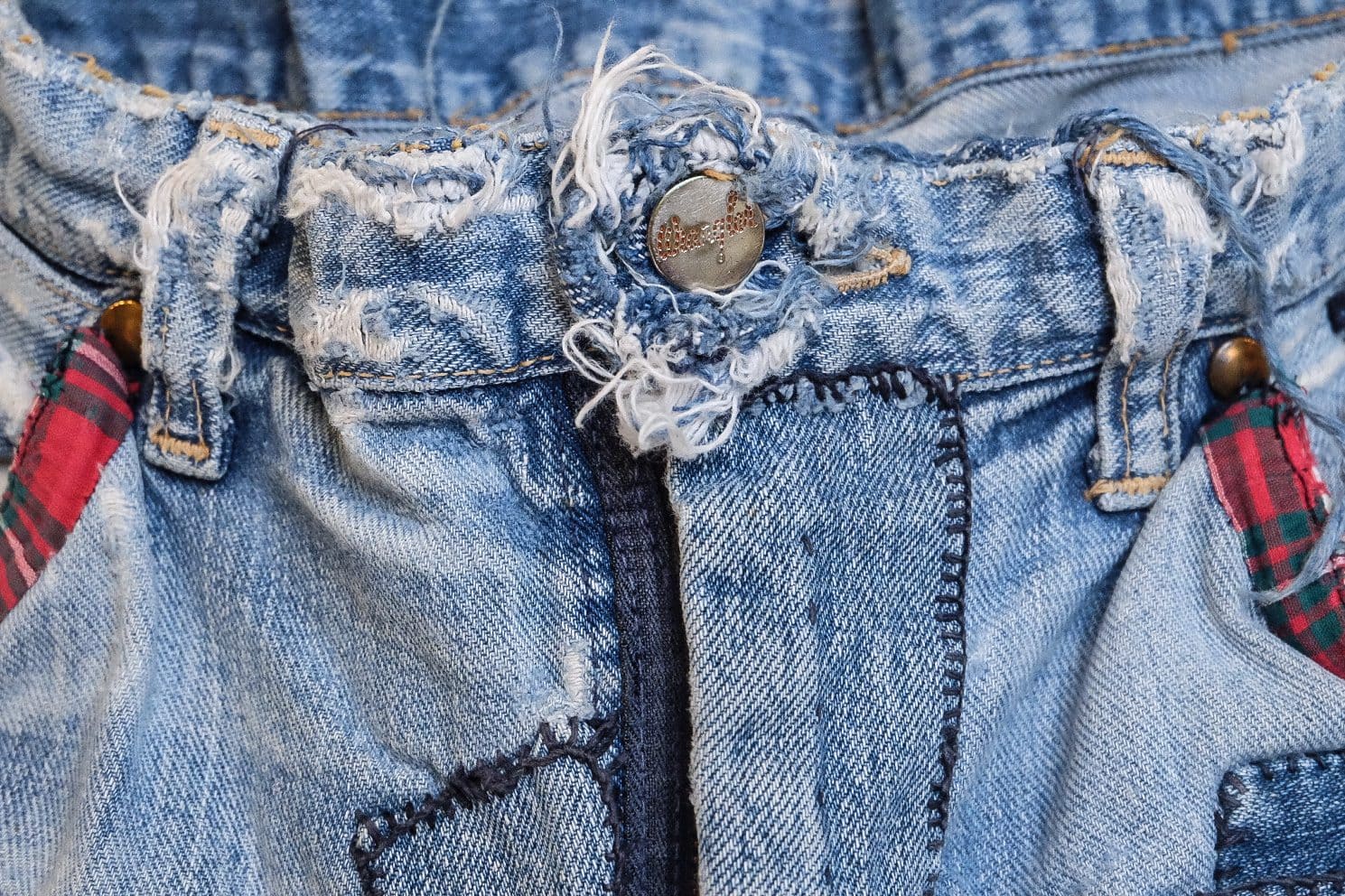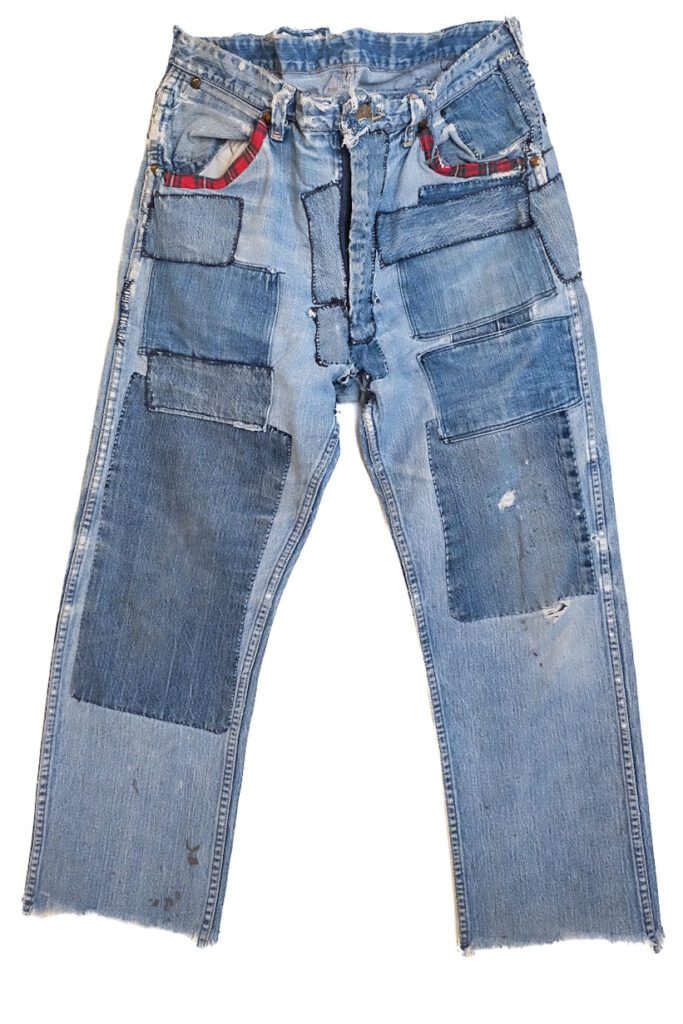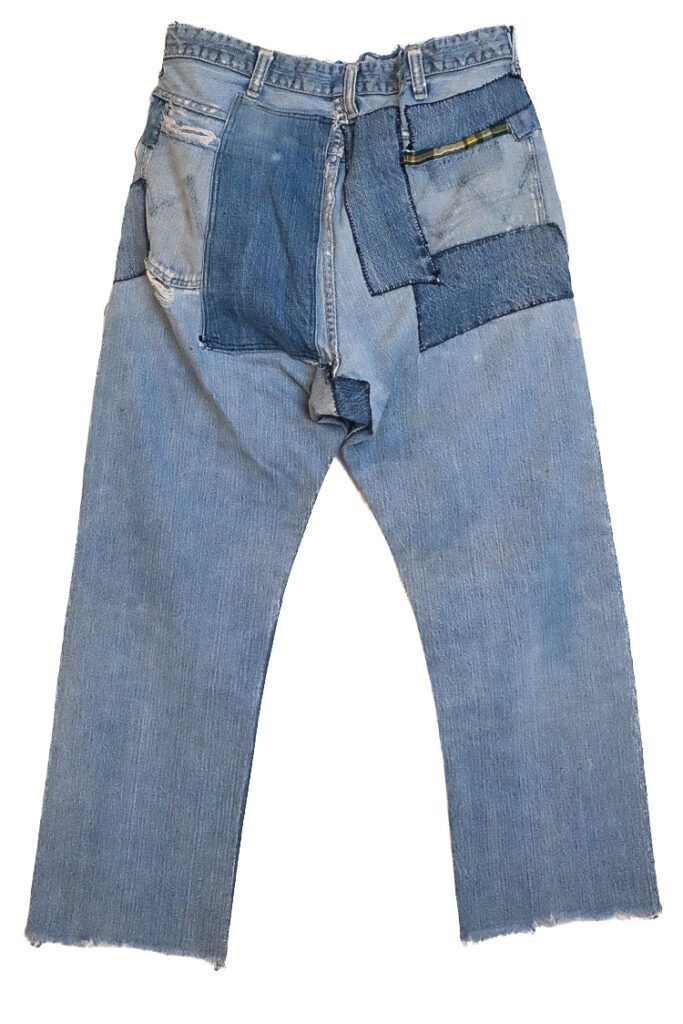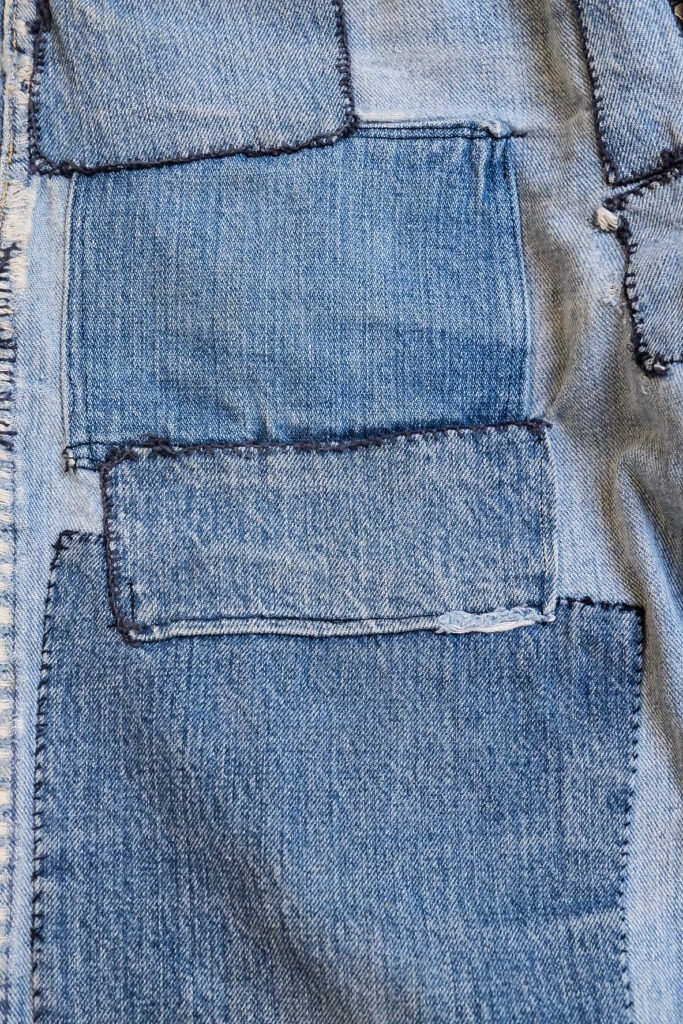

Sometime around 1950, a man in Dover, NH went out shopping, or maybe sent in the mail order slip in the back of a Liberty magazine, and purchased a pair of 11 MWZ Wrangler Blue Bells. Half a century later, these same vintage jeans are listed across clothing resale websites for more than $200. But to a man in New Hampshire, it was the 50s, and he had just purchased his favorite pair of jeans. Over the next 50 years, he would spend hours patching every rip and hole, using a wide range of cloth materials to extend the pants’ wear. Flannel shirts were cut and sewn to cover torn pocket lips, other denim items were martyred. Most noticeably is a large patch cut from a pair of jeans made of selvedge denim, a material that is sought with a fervor in the vintage world. These beloved jeans now have their home in the Tatter Blue Library collection.
Some days, he would sew everything by hand, taking time to stitch and restitch the corners of every patch, to ensure none would fall off. Other days, he would use a machine, carefully double stitching each side of the patch to secure them. Some areas on the pants were patched over so many times that the denim lays several centimeters thick. At some point, the rips became so dire he even sacrificed the bottom hem of each pant leg to create the patch repairs. One fatal day, he must have bent over, or fallen, or stepped upwards too far, and ripped the entire back pocket on his left side, which left him no option but to patch the entire pocket closed. These mountains of stacked denim and routinely mended tears give even more insight into who this man was– that he favored his left knee, that he carried things in his pockets so much they would rip open, and that he methodically and meticulously cared for his beloved garment, carefully choosing new denim and thread. They became such a part of this man’s identity that when he died in the mid 2000s, his family referred to his Wranglers lovingly as “dad’s favorites”.
Through each repair, he destined his jeans to outlive him, to tell his story through fading indigo dye, cloth, and repair. A part of his story lives in his pair of pants, to be pieced together by those who investigate his handiwork of blanket and running stitches and carefully selected patches.



It is this sense of mystery, and the desire to know those who came before you, that draws so many to the world of vintage denim. It is this desire that turns each denim picker into a detective who examines each and every rip and stain a thousand times over, in an attempt to piece together the life of someone unknown and to know the past through cloth.
It is this same desire that spurred an argument over the zipper of these same Wranglers. Some were certain the jeans could not be older than the 70s. Others thought they might possibly be from the 50s, and that the hand sewing by the zipper was indication that the zipper itself might’ve been replaced entirely in the 60s with a talon zipper, and that originally these jeans would’ve had the classic “Gripper Zipper”. Still others were absolutely confident that the jeans they were presented with were a pair of 1960’s Wrangler Blue Bells, and that this was in fact the original zipper. How funny it must seem, to an outsider, that a group of adults could be arguing over whether this zipper is original or not, whether these jeans are 60 years old, or if they are 70 years old, if this patch is really selvedge or not. But whether you are an expert denim collector, or have simply bought a pair of jeans ever in your lifetime, you, just like the owner of these wranglers, are participating in one of the greatest fashion and cultural movements in history.
In their initial iteration, the first pair of jeans were laborers’ wear. In 1853, Levi Strauss was commissioned to create a pair of pants that could withstand the environment of the California gold fields. With the addition of the copper pocket rivets, so that the pockets would be able to withstand the weight of gold and tools, Levi’s Jeans became known for durability and long wear. Other companies, like Wrangler and Lee, started to produce denim jeans in the following decades to keep up with the demand for tough, long lasting work clothing.

In the 1930s, denim retained the semiotics of the west, of hard workers and cowboys, as well as the stars who portrayed them on the silver screen. In the 1950s with the end of World War II weighing heavy on the backs of American youth, jeans became a symbol for rebellion, a symbol for their refusal to give their spirit or body up for the State. Famous cinematic bad boys like James Dean in Rebel Without a Cause and Marlon Brando in The Wild One stood clad in blue jeans, a choice that illuminated the rebellious and almost troubled quality of their characters. As decades past, jeans remained ever present in the zeitgeist of youth fashion, their guarantee of longevity and quality ever strong. And now, in the 21st century, they remain as present and important as always, although their roots as the working man’s trousers are slightly lost, as brands like Raf Simons sell their jeans for upwards of $400. But still the indigo cloth is imbued with all the symbolism of the past, of the expression and utility promised by the copper rivets and sturdy cotton.
100 or so years after the first pair of jeans were made, a man bought a pair of Wranglers that would last him a lifetime, earning him immortality through denim. I don’t think he could’ve imagined that his favorite jeans would become the source of such interest and investigation, or that they would even outlive him in the first place.
It is not so strange that someone could love a pair of jeans so much, and it is not so strange that someone could dedicate so much time to telling the stories of clothes, through them the stories of the people who loved them.



